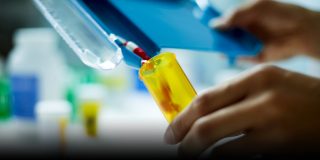Kenya is building a multi-million dollar drug factory for manufacturing AIDS drugs. Worth about 10billion shillings ($100m), the factory is billed to be the largest on the continent when it opens later this year according to a report by The Guardian. Drugs manufactured at the Nairobi-based factory will be processed in partnership between the Kenyan government, the Global Fund, and local drug manufacturers. Most of the drugs will be under the patent of European parent companies, including GlaxoSmithKline.
Currently, there are 1.5 million Kenyans living with HIV and nearly a million on anti-retroviral treatment (ART). The overall prevalence rate of HIV in Kenya is about five percent, with a 5.2 percent prevalence among women, and a prevalence of 4.5 percent in men. Each year, the number of new infections increases by more than 44,000 people. Still, the country imports about 90 percent of Aids drugs from Europe and India.
The country’s medical director, Dr Jackson Kioko said the establishment of the factory will help reduce Kenya’s spending on its Aids epidemic to a large extent. “This will cut our annual government budget from 38billion shillings ($377m) to a reasonable amount that we spend treating HIV/AIDS,” Dr Kioko said. It will also create a thousand jobs, provide treatment for about 300,000 people, and reduce the reliance of African countries on European imports. The factory will supply drugs, including drugs for malaria and tuberculosis to 23 African countries.
Furthermore, the new factory will help tackle the saturation of counterfeit drugs in Kenya. A problem that has caused drug misuse and consequently resulted in cases of drug resistance to the AIDS virus. These fake drugs are introduced into the market by Chinese criminal cartels, bought by unregistered medical personnel, and sold to desperate people with the promise of a cure from their infection.
Many of these people ditch ART for the alternative of fake miracle drugs, most of which have been tested by government regulatory agencies and found to be extremely harmful. “Issues to do with fakes will be a thing of the past, but we will also cater for the rising number of new infections each year despite a declining prevalence rate of 5.2 percent,” said Dr Kioko.
According to Dr Martin Sirengo, head of Kenya’s national AIDS and STI control programme, the presence and supply of locally made drugs will hopefully encourage more people to test their HIV status. “We will be conducting surveys very often so that we can identify special cases, and the amount and type of drugs to be produced will then be determined,” Sirengo said. He also hopes that drugs would be manufactured to cater for other diseases and ailments.








